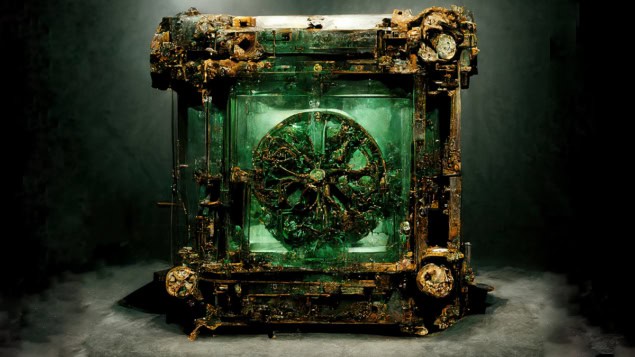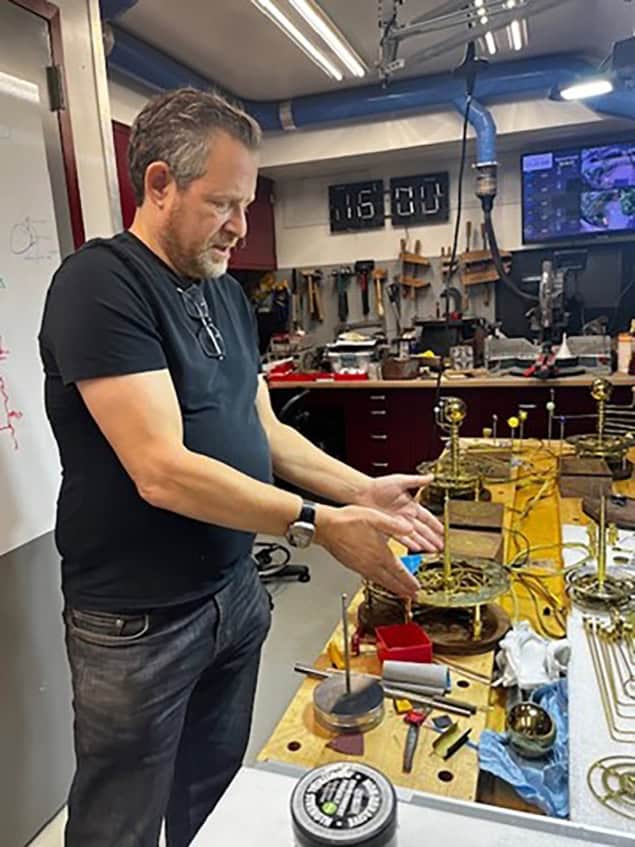Robert P Crease meets inventor-financier-explorer Michael Dubno, who is trying to solve the mystery of the Antikythera mechanical device, used by ancient Greeks to predict astronomical positions

“You can’t understand it unless you build it yourself,” says Michael Dubno, a scientist, inventor and explorer. He’s talking to me in the richly equipped basement workshop of his Manhattan townhouse, standing in front of a long table, crammed with partly built mechanical devices to replicate the relative positions of astronomical objects.
By “it”, Dubno is referring to the Antikythera, an ancient device whose fragments were found by sponge divers in 1901 in a sunken ship near the Greek island of that name. Over the next few decades, archaeologists figured out that the object was a sophisticated ancient Greek instrument to predict the movement of astronomical bodies – and that it dates from around the 2nd or 3rd century BCE.
The device radically changes what historians thought of the astronomical, mathematical and engineering capabilities of ancient Greece
Historians of technology are still shocked by the Antikythera. Though encrusted, degraded and with only 30 of its supposed 60 gears discovered, nothing remotely as complicated has ever been found dating from anywhere near that time. The device radically changes what historians thought of the astronomical, mathematical and engineering capabilities of ancient Greece.
Other mysteries include how the Antikythera works. Its gears evidently drove a pointer around a moveable calendar ring, allowing ancient Greeks four millennia ago to predict the motions of the Sun, Moon and five planets. But it’s unclear what the remaining gears were or how they worked.
Such mysteries have enveloped the Antikythera with mystique. In fact, it appears as the McGuffin – the central but meaningless plot device – of the 2023 adventure film Indiana Jones and the Dial of Destiny. The movie’s villains are looking for the Antikythera because its supposed time-travelling properties would give them unlimited powers.
The movie’s hero is an archaeologist (played by Harrison Ford) who, reluctantly, joins a team of people seeking to keep the Antikythera from the villains. He’s initially dismissive, calling it “an ancient hunk of gears”. But he recovers the missing parts of the device, is kidnapped and taken through a time fissure back to Archimedes’ time, defeats the villains, and, reluctantly, returns.
Hunk of gears
That hunk of gears attracted Dubno.
A Brooklyn-born New Yorker, he attended the Bronx High School of Science, which is famous for producing seven Nobel-prize winners. Dubno entered Rensselaer Polytechnic Institute but dropped out to start a software company. He then built a robot, advanced for the time, that navigated around with GPS-like and sonar sensors.

Dubno also pioneered risk programming and financial analysis for the investment banking company Goldman Sachs, becoming its chief technology officer, and later worked for Bank of America. After quitting the finance world, Dubno led scientific expeditions to the North Pole, into the Mariana Trench and inside the Masaya Volcano.
But on my visit, he mainly wants to talk about the Antikythera, and the orreries that he is working on based on its gearing. Dubno is not alone in his fascination with this strange object, which numerous scientists and hobbyists have studied for over a century, developing theories and collecting data about its operation.
Dubno, however, came at it indirectly. About 15 years ago he bought a laser cutter/etcher and wondered what novel things he could do with it. “For the first time I was able to make gears quickly”, he says. “And I thought, ‘How hard could it be to make a model of the Antikythera?’”
He joined some like-minded people: Chris Budiselic, a machinist from Australia, Andrew Thoeni a professor of business and marketing at the University of North Florida, and Andrew Ramsey, an X-ray imaging scientist from Michigan. They soon ran into unexpected difficulties with their model.
One had to do with drag on the mechanism due to galling. “The Antikythera mechanism with the 30 known gears”, Dubno says, “already has enough drag in it that by the time you start adding the other gears to drive the planets there’s a good chance you can barely squeak out the performance.”
Oil doesn’t help; it increases surface tension. Jewelled bearings might do, but the Greeks almost certainly didn’t have them. Graphite seems to work, but it is unclear what the Greeks used. “You might have a theory of how it works, but it probably won’t work the way you think – you must build it.”
Another problem had to do with the Antikythera’s gears. They used triangular teeth, but such teeth quickly wear into a different shape, and Dubno had to figure how to cut those gears to replicate it.

Wine, skis, clocks, bones: why Linn Hobbs lives in a material world
Still another issue concerned the Antikythera’s moveable calendar ring, which used marks for days and a series of holes for adjustment. Researchers had assumed the lines and holes laid out an Egyptian solar calendar of 365 days. But after extensive calculations, Dubno and his team determined that the calendar ring was most likely based on 354 days, representing 12 lunar cycles.
They presented their findings in a research paper in the Horological Journal (2020) that has recently been confirmed using different mathematical techniques (arxiv.org:2403.00040v1). This discovery suggests the need for historians to revise their understanding of calendars in ancient Egypt.
Dubno is still shocked by the confidence of the Antikythera’s makers. “We don’t see any corrections”, he confides. “That means whoever built it knew what they wanted to do and didn’t see the need to change it when finished. That means there must have been previous prototypes. Where are they?”
The critical point
Historians can make surprising discoveries by doing things the way the ancients say they did. An example concerns Galileo’s observation that, when two bodies of different masses are dropped, the light one first moves ahead before the heavy one catches up. Some historians therefore concluded that Galileo was a poor observer, because “everyone knows” that all bodies fall at the same rate.
But in the 1980s the late science historian Thomas Settle repeated Galileo’s experiments exactly as he had written – and was startled to observe exactly what Galileo said. Further investigation found that the hand holding the heavy object becomes slightly fatigued, making the release slightly slower, though the heavy body soon catches up due to air resistance.
The finding about the Antikythera’s calendar would not have come to light without rebuilding the device. As Dubno point outs in his team’s paper about their work, doing so demonstrates the value of rebuilding other ancient mechanisms and instruments with the original skills. This would not only help reveal true and false interpretations, but also “assist in properly illuminating the reality embodied in an ancient device”.
As for the full purpose of the Antikythera and its makers, the mystery continues.
- SEO Powered Content & PR Distribution. Get Amplified Today.
- PlatoData.Network Vertical Generative Ai. Empower Yourself. Access Here.
- PlatoAiStream. Web3 Intelligence. Knowledge Amplified. Access Here.
- PlatoESG. Carbon, CleanTech, Energy, Environment, Solar, Waste Management. Access Here.
- PlatoHealth. Biotech and Clinical Trials Intelligence. Access Here.
- Source: https://physicsworld.com/a/could-the-answer-to-the-antikythera-astronomical-device-emerge-from-a-manhattan-basement/



